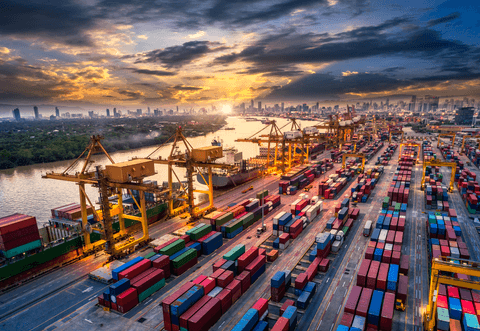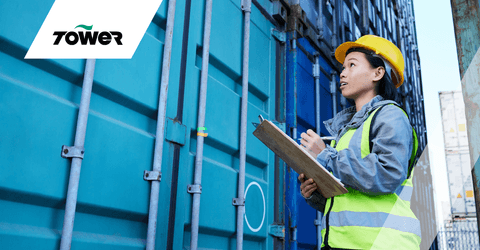
Looking at some of the most important types of PPE for those working in the marine industry.
For those working at sea, the risk of injury is high. Ships are large heavy-duty transport machines and by their nature, make PPE essential. The typical PPE solutions required for the maritime industry is a whole body head-to-toe solution including everything from hardhats to non-slip safety footwear.
While PPE will be supplied to staff by the employer, it is the employee's responsibility to make sure they wear and use it correctly. Employers must ensure that workers never feel that the PPE that have been given is unnecessary or uncomfortable to wear.
As PPE isn’t optional and an essential part of workplace safety, choosing not to use safety equipment puts people at risk. Explaining the risks and providing the correct training for maritime PPE will help prevent unnecessary injury.

A full head-to-toe setup can be the most effective form of protection for those working at sea. In order to gain full protection, a combination of typical PPE is required, as well as some specialist items.
This would include coveralls, safety shoes, safety gloves, head protection and potentially some hi-vis. Some workers may need flame-resistant or anti-static coveralls or specific non-slip safety shoes. Or safety shoes with ankle covers.
We provide our customers with all the information they need when purchasing PPE. It can be difficult to navigate all the requirements and find exactly what you need.
Here are some examples of PPE you may need on a ship:
Coveralls or boiler suits are provided to protect the body from general harm. It protects the wearer from hazardous substances such as hot oil, water, welding sparks or chemical splashes.
Specialised hi-vis coveralls, arc flash-resistant or fire-resistant coveralls may be required for individuals working in specialised conditions. Hi-vis coveralls provide visibility as well as protection.
Safety helmets, bump caps or simple hair protection are examples of protective equipment required on board a ship. Workers handling cargo or heavy machinery are at risk of impact-related injury.
Falling debris is also a concern for those working in shipyards. The risk of head injury is not just confined to the ship itself. To learn more about head protection, read our ultimate guide for everything you need to know.
Hands can be easily injured if the correct protection isn’t provided. Sharp objects, extreme cold, chemical contact and pinch points are all potential hazards for hands.
Providing the appropriate hand protection could save workers from permanent damage from frostbite or fingers being caught and ‘pinched’ between two objects.
When there is a risk to the eyes from the likes of smoke, dust, light exposure, electrical discharge, or even cold weather, eye protection should be worn. The correct eye protection depends on the location and task they are working on.
There are three standard types of eye protection, this includes safety goggles, safety glasses, and face protection.
Hearing protection is required if ship noise cannot be eliminated or reduced. When noise reduction isn't possible, for example in engine rooms the correct hearing product must be provided.
Earplugs cut down on sound pressure reaching your eardrum, while earmuffs can be worn over the entire ear. Earmuffs don’t block the sound entering the ear like ear plugs.

Lifejackets are the necessary lifesaving equipment used when abandoning a vessel in an emergency. They are designed to keep the wearer upright and facing away from the water even if the wearer is unconscious.
When there is a risk of falling into water and drowning, Personal flotation devices (PFDs) should be provided. PDFs are essential to keep someone safely afloat. These are essential even if someone is a strong swimmer.
The typical winter gear to be provided to workers at sea should provide both insulation and waterproofing. Insulated coveralls, waterproof jackets and trouser coverings, as well as insulated boots and gloves, are key items of protective clothing to keep workers warm in cold weather.
Speak to one of our subject matter experts to find out what PPE you need on your cruise ship. For further information fill out the form below or call us on 01202 718000.